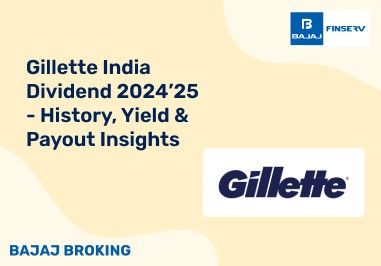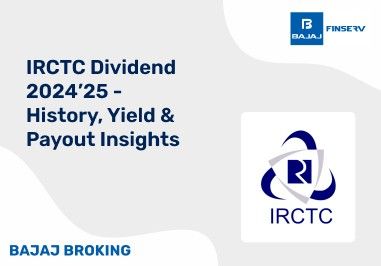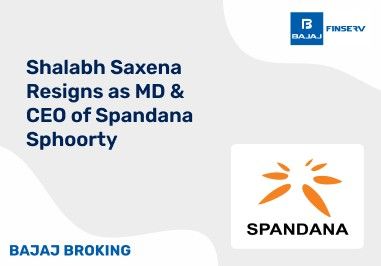Backtesting is a crucial process in trading. It is a testing process for a trading strategy with historical market data. It allows the traders to understand how well the strategies can perform without risking actual money. It provides them with ideas about how a strategy can perform in various market conditions.
What is a Backtesting Trading Strategy?
A backtesting trading strategy refers to the systematic approach of testing a trading strategy using past market data to evaluate its performance. The primary goal is to determine how well the strategy would have performed had it been implemented in real-time trading. This process is based on the assumption that strategies that have shown good results in the past are likely to continue performing well in the future, while those that have performed poorly may not be effective going forward.
By simulating trades based on historical data, traders can identify the strengths and weaknesses of their strategies. This helps in refining their approach before committing real funds, ultimately enhancing confidence when they decide to open trading account online or engage in margin trading facilities (MTF) for intraday trading, options, or futures.
Basics of Backtesting Trading Strategies
- Define the Strategy: Clearly outline your trading strategy, including entry and exit points, risk management rules, and time frames.
- Gather Historical Data: Collect relevant historical market data, such as price movements and volume, ensuring it covers various market conditions for a comprehensive analysis.
- Apply the Strategy: Implement your defined strategy on the historical data. This involves simulating trades according to your established rules and conditions.
- Analyze Results: Evaluate performance metrics such as profit and loss, drawdowns, and win/loss ratios to assess the strategy's effectiveness.
- Refine the Strategy: Based on the analysis, make necessary adjustments to optimize your strategy for better performance in live markets.
Through this structured approach, traders can gain valuable insights into their strategies' potential performance before engaging in actual trading activities. This preparation is especially crucial when considering complex instruments like ETFs or derivatives.
Why is Backtesting Important for Traders?
Backtesting is essential for traders as it provides a systematic approach to evaluate trading strategies using historical data. This process offers several key benefits:
- Risk Assessment: By analyzing how a strategy would have performed in the past, traders can identify potential risks and prepare for possible losses. Understanding these risks helps in managing portfolios more effectively.
- Strategy Validation: Backtesting enables traders to find out if their strategies would have earned them money previously. This confirms to them before they use them in real markets.
- Performance Metrics: It provides useful metrics like win rates, maximum drawdowns, and profit factors that enable traders to compare strategies and select the one.
- Confidence Building: When traders know that a strategy has been checked against past data, it makes them feel more sure. This helps them stick to their plans, even when the market is unstable.
- Continuous Improvement: Constant backtesting enables the trader to adjust their strategies to changing market conditions, remaining relevant and profitable in the long term.
Key Factors to Consider in Backtesting
When conducting backtesting, several critical factors must be taken into account:
- Data Quality: Ensure that the historical data used is accurate and comprehensive, covering various market conditions to provide reliable results.
- Overfitting Risks: Be cautious of overfitting, where a strategy is tailored too closely to historical data, potentially leading to poor performance in real-time trading.
- Transaction Costs: Incorporate realistic transaction costs and slippage into the backtesting results, as these can significantly impact profitability.
- Market Conditions: Consider the market environment during the backtesting period. Strategies may perform differently under varying conditions, such as bullish or bearish trends.
- Parameter Sensitivity: Observe how your approach responds to modifications in the parameters. It should be robust enough to demonstrate fine performance for quite a number of different configurations, not for only one specific setting.
How to Do Backtesting in Trading?
To effectively backtest a trading strategy, follow these steps:
- Define Your Strategy: Clearly outline the rules for entry and exit points, risk management techniques, and any indicators you plan to use.
- Gather Historical Data: Collect relevant historical data that reflects the market conditions you wish to analyze. Ensure it covers various time frames for comprehensive insights.
- Select a Backtesting Tool: Choose a suitable backtesting platform or software that allows you to input your strategy and apply it to the historical data.
- Run Simulations: Implement your defined strategy on the historical data through simulations, tracking performance metrics such as profit/loss and drawdowns.
- Analyze Results: Review the outcomes of your simulations. Look at key performance indicators like win rate and maximum drawdown to assess effectiveness.
- Refine Your Strategy: Based on the analysis, make necessary adjustments to optimize your strategy before considering opening a trading account online or engaging in margin trading facilities (MTF).
Traders following these steps can gain valuable insights into their strategies' potential effectiveness. That brings the option to make informed decisions before entering live markets.
How to Manually Backtest a Trading Strategy?
Manually backtesting a trading strategy needs a detailed and systematic approach to evaluating how the strategy would have performed using historical data. Here are the key steps to follow:
- Define Your Trading Strategy: Lay down your guidelines for when to sell and buy, how to risk, and what indicators to use. Having a well-defined strategy is highly important for successful backtesting.
- Select Historical Data: Select a historical period representing the conditions you expect the future market will present. The data should consist of price movements, volume, and other notable indicators.
- Analyze Trades: Go through the historical data, applying your strategy to simulate trades. Record each trade's entry and exit points, as well as the outcomes (profit or loss).
- Calculate Performance Metrics: After simulating trades, calculate key performance metrics such as total return, maximum drawdown, and win/loss ratio. This analysis will help determine the effectiveness of your strategy.
- Refine Your Strategy: Make appropriate changes in your strategy based on what you have learned. In case the outcome is not as expected, consider modifying your rules or strategy prior to deciding to open an online trading account or use margin trading facilities for intraday trading.
How to Backtest a Strategy Using Software?
Backtesting using software can streamline the process significantly. Here’s how to do it:
- Choose Backtesting Software: Select a reliable backtesting platform that suits your needs. Many software options allow you to input your trading strategy easily.
- Input Your Strategy: Enter your defined trading rules into the software, including entry/exit points, stop-loss levels, and profit targets.
- Set Historical Parameters: Specify the historical time frame for which you want to run the backtest. Ensure it covers various market conditions for comprehensive analysis.
- Run the Backtest: Execute the backtest within the software. The program will automatically simulate trades based on your strategy and historical data.
- Review Results: Analyze the output provided by the software. Look at performance metrics such as profitability, drawdowns, and win rates to assess how well your strategy would have performed.
- Optimize Your Strategy: Use insights from the results to refine your strategy further. Adjust parameters as needed to enhance performance before considering opening a demat account or engaging in futures or options trading.
Backtesting vs. Scenario Testing
Backtesting and scenario testing are both methods used to evaluate trading strategies but differ in their approaches.
Backtesting involves applying a trading strategy to historical market data to assess its potential performance based on past trends. It provides quantitative results that help traders understand how their strategies might fare under similar future conditions.
On the other hand, scenario testing is the method of creating hypothetical market situations that never existed in the past. Traders simulate how their strategies would perform under these various scenarios so that they are able to prepare for unexpected market events. In contrast to backtesting with actual historical data, scenario testing is focused on hypothetical conditions that may influence future trading outcomes.
Backtesting vs. Forward Performance Testing
Backtesting and forward performance testing serve different purposes in evaluating trading strategies.
Backtesting focuses on using historical data to test a strategy's effectiveness before live trading. It provides insights into how a strategy would have performed in various market conditions based on past price movements.
On the other hand, forward testing of performance is done when a strategy is traded live in the market after backtesting. Forward testing puts the strategy's performance to the test in real live market conditions rather than entirely through past data. Forward testing is necessary to verify backtested strategies because forward testing incorporates aspects based on real life, e.g., slippage, and commission that are not even fully reflected while backtesting.
Both methods are essential for developing robust trading strategies; however, they complement each other by providing insights from both historical performance and real-time execution.
The Ideal Backtesting Scenario
The ideal backtesting scenario involves selecting a diverse and representative sample of historical data that reflects various market conditions. This ensures that the results obtained are not merely coincidental but indicative of a strategy's true potential. Key elements of an ideal backtesting scenario include:
- Diverse Market Conditions: The historical data should encompass different market environments, including bull and bear markets, to assess how the strategy performs in varying situations.
- Comprehensive Data: Include a broad range of stocks, even those that faced bankruptcy or liquidation, to avoid artificially inflated returns that can occur when only successful companies are analyzed.
- Inclusion of Trading Costs: All relevant trading costs, such as commissions and slippage, should be factored into the backtest results, as these can significantly impact profitability.
- Validation through Multiple Testing Methods: Incorporating out-of-sample testing and forward performance testing can provide additional confirmation of a trading system's effectiveness. A strong correlation between these results is crucial for validating the strategy before deciding to open trading account online.
Practices for Effective Backtesting
To conduct effective backtesting, traders should adhere to several practices:
- Define Clear Rules: Establish precise entry and exit criteria, position sizing, and risk management rules to ensure consistency in testing.
- Use High-Quality Data: Ensure that historical data is accurate and comprehensive, covering all necessary price movements and volumes relevant to the strategy.
- Avoid Overfitting: Avoid fitting strategies too well to historical data, since that can result in suboptimal performance under live trading conditions.
- Document Everything: Keep precise records of all transactions entered in a backtest, including their entry and exit levels and outcomes. This detailed documenting is necessary while measuring performance.
- Update your strategies periodically, constantly refining and re-tweaking them with the help of backtesting results so that you can adapt to the ever-shifting market environments.
Time Period for Backtesting a Trading Strategy
When choosing the period for backtesting a trading system, remember the following:
- Length of Historical Data: Choose a time period with 3 or more years of historical data to cover a couple of market cycles. A minimum time period of 3-5 years is typically recommended for robust analysis.
- Relevance to Current Market Conditions: Ensure that the chosen time period reflects current market dynamics. For instance, if you plan to engage in intraday trading or options trading, focus on periods with similar volatility levels.
- Frequency of Trading Strategy: For high-frequency strategies or margin trading facility (MTF), short time horizons (e.g., a few months) may be enough. But longer term strategies may require lengthy history of data for a few years.
By selecting the appropriate time period for backtesting, the traders will be able to learn more about how their strategies work in real situations without opening a demat account or opting for futures trading.
Pitfalls of Backtesting
Backtesting is an important tool for traders, yet it has some problems that may cause false results. Some of the usual problems are:
- Overfitting: This is when a strategy becomes specialized to historical data and picks up on random noise rather than real market trends. Such strategies work well in backtests but will fail in live trading since they will not be able to adapt to new market developments.
- Ignoring Transaction Costs: Many traders ignore transaction costs, which include brokerage commissions and slippage. This mistake can significantly impact the profitability of a strategy, which can result in unreasonable expectations of its performance.
- Data Snooping Bias: Using the same data to create and test a strategy can yield results that are too optimistic. Data snooping bias is when people look for patterns that confirm what they believe instead of testing the strategy objectively.
- Survivorship Bias: Focusing on those assets that survived the test period makes one blind to the ones that failed. This type of bias tends to overestimate the performance of a strategy.
- Look-Ahead Bias: Applying future data that was not accessible during the decision-making process can change the result. It is very important to use only historical data accessible during trading for effective backtesting
Advantages and Disadvantages of Backtesting
Backtesting carries both advantages and disadvantages, so it’s vital you know which apply more in your case before you opt to make use of this method. The table below enlists a few.
Advantages
|
Disadvantages
|
Provides a systematic way to evaluate strategies using historical data.
|
May lead to overfitting, resulting in poor real-world performance.
|
Helps identify potential risks and profitability before live trading.
|
Can produce misleading results if transaction costs are ignored.
|
Builds trader confidence by validating strategies against past performance.
|
Data snooping and survivorship biases can distort findings.
|
Allows for refinement of strategies based on empirical evidence.
|
Look-ahead bias can compromise the integrity of backtest results.
|
Conclusion
Backtesting is a practical exercise for traders who want to enhance their strategy and make wise decisions before trading with real money. Backtesting offers numerous advantages, such as strategy testing and risk identification, but traders ought to be cautious about its limitations. Addressing and understanding factors like overfitting, trading commissions, and biases allows traders to validate their backtesting results.













